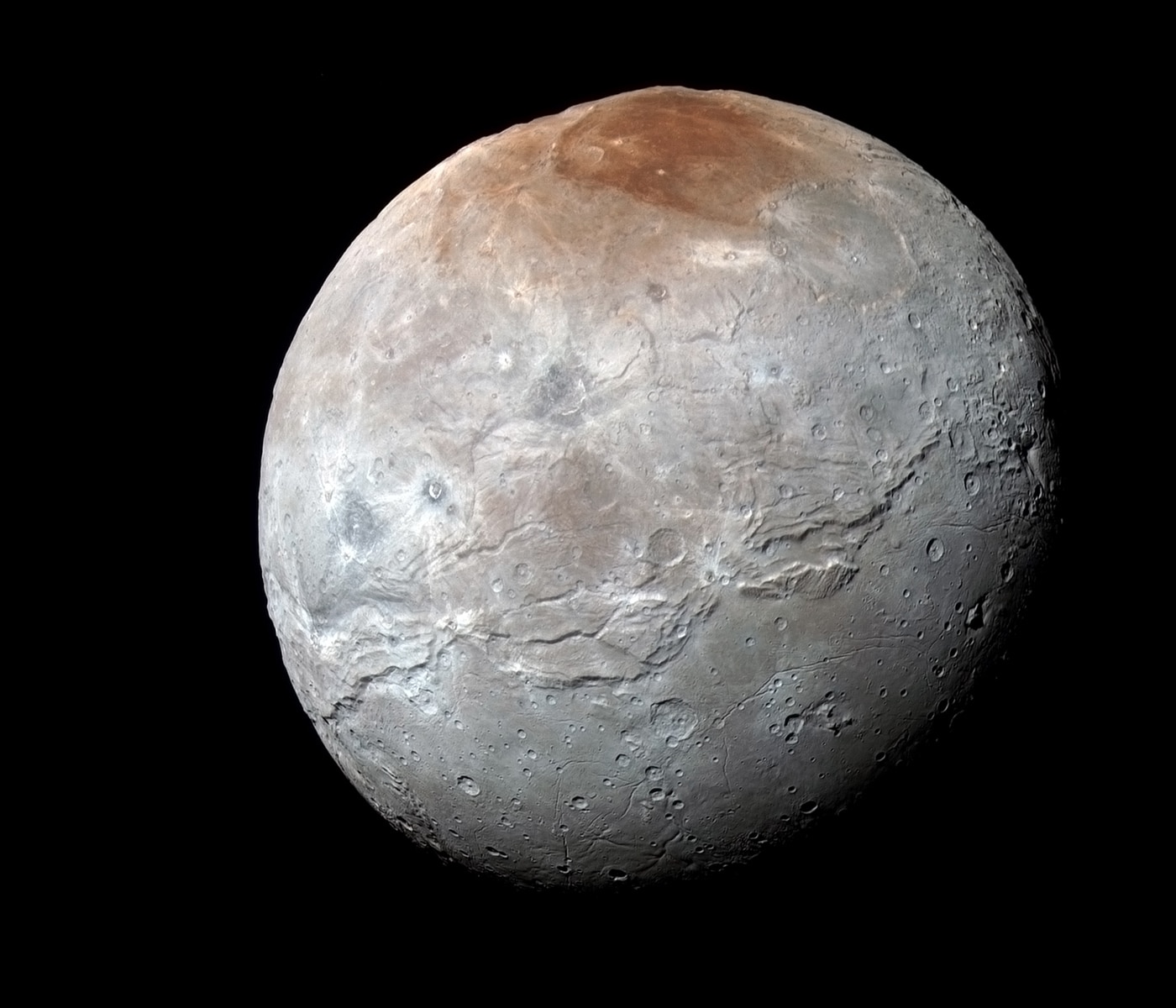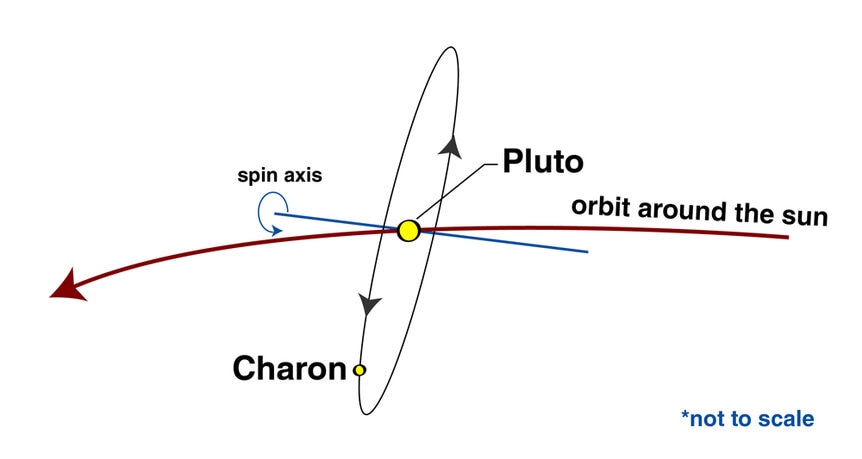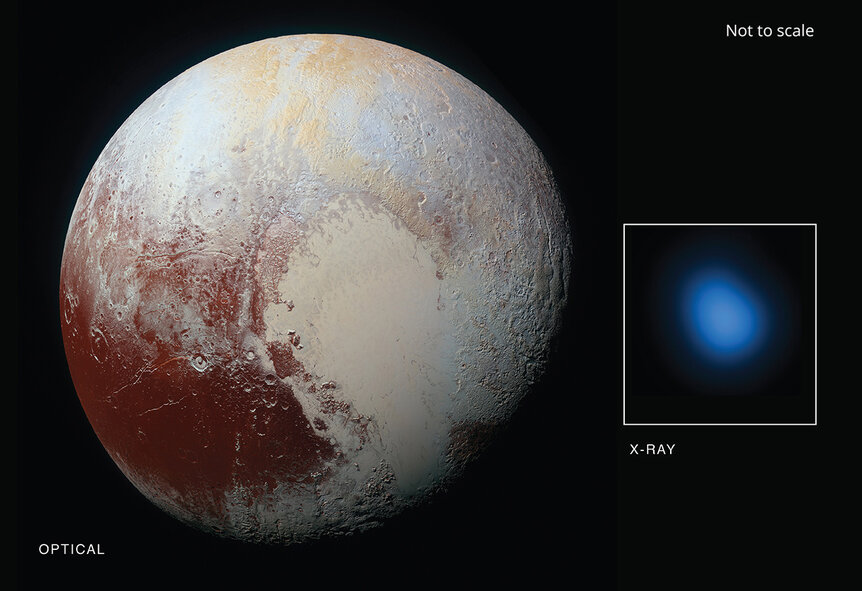Create a free profile to get unlimited access to exclusive videos, sweepstakes, and more!
It turns out methane CAN simply walk into Mordor

[Pluto's moon Charon is a mess. It has many striking features, but the polar red spot — Mordor Macula — may be the weirdest. Credit: NASA/Johns Hopkins University Applied Physics Laboratory/Southwest Research Institute]
When the New Horizons spacecraft shot past Pluto in July 2015, we finally saw the weird little world in detail for the first time. During that short encounter — at a flyby speed of 14 kilometers per second, there’s not a lot of time to dawdle — the probe saw wonders we hadn’t even imagined.
There were so many bizarre and wonderful sights returned to Earth that it’s hard to rate them in terms of strangeness. But one thing that surprised me, personally, was Pluto’s moon, Charon. I figured it would be odd (everything associated with Pluto is odd), but it was still profoundly weird.
For one thing, it looks like someone took the moon apart and then stuck it back together with little attention paid to aesthetic. It’s Frankenstein’s moon! But if you get past the overall look of it, there’s still a striking feature that gets more peculiar the more you look at it: Charon’s north pole. It’s red!
Astronomers on the New Horizons mission nicknamed this region Mordor Macula: The Dark Spot of Mordor. Appropriate.
But naming it doesn’t help us understand it. Why, in a moon that’s overall a darkish grey, does it sport a creepily blood-tinted cap?
One clue is that reddish hues are common in the outer solar system. In most cases, it’s due to the presence of organic molecules— that is, carbon-based molecules (so don’t start thinking aliens...which is generally pretty good advice for any situation). If you start with simple molecules like methane and bombard them with ultraviolet light, they break down into their constituent atoms and can rearrange themselves into much more complex molecules.
One end product of this complicated process is a class of molecules called tholins (Greek for “muddy”). They form in the presence of methane, UV light, and nitrogen, and tend to be reddish in color. If this is what’s causing the coloration of Mordor, then where did all this stuff come from? Charon is decidedly lacking in nitrogen and methane on its surface (mostly, it’s made of water ice).
It turns out there’s a big source for these things quite nearby: Pluto, itself! The surface of Pluto is loaded with frozen nitrogen and methane ices. And while Pluto is pretty cold, temperatures at some spots are high enough to cause nitrogen ice to sublimate; that is, turn into a gas. This forms a very thin atmosphere above the world— at sea level, Earth’s atmosphere is about 100,000 times thicker.
But it’s there, and has some methane mixed in, as well. So, astronomers speculated that, somehow, this was spilling over from Pluto to Charon (they’re only about 20,000 km apart, close enough for them to contaminate each other). But why was it only staining Mordor at the pole and not the whole moon?
A paper published in 2016 may have the answer. Pluto’s atmosphere is very thin and stretches quite high above the surface. It does, indeed, spill over to Charon, and does cover the whole surface. But then things change, and that’s due to Pluto and Charon’s unusual tilt.
Pluto spins on its side. That is, the axial tilt of Pluto is about 122° relative to its orbit (compare to Earth’s tilt of 23° or so relative to its own orbit). It has a day only about six days long*, but a year of almost 250 Earth years. As it spins, the equatorial regions get some sunlight pretty much any time of year, but the poles have extreme seasons: Each gets 125 years of sunlight, then 125 years of cold, cold night.
So, any of the nitrogen and methane that goes from Pluto to Charon quickly dissipates at sunny lower latitudes, but the stuff that falls on the nighttime pole gets trapped there (and the stuff from the warmer climes also bounces around the surface until it reaches the cold pole, then gets trapped there as well). This stuff gets bombarded by radiation — for example, cosmic rays (subatomic particles zipping around the cosmos at nearly the speed of light), the solar wind, and sunlight scattered by the very thin dust between the planets in our solar system. This breaks down the methane and nitrogen, creating tholins.
By the way, this idea is supported by observations made using the Chandra X-Ray Observatory, which detected X-rays from Pluto. These high-energy photons are created when the radiation hits Pluto and its atmosphere, and while faint the X-ray glow was definitely detected.
Anyway, when, after a century and a half, the pole emerges into sunlight again, the ices quickly sublimate again, leaving the heavier reddish stuff behind. Voila! The bloody hue of Mordor explained.
But wait! Shouldn’t we expect to see the same thing at Charon’s south pole as well? What about that?
New Horizons flew by the system during the northern hemisphere summer, so Pluto and Charon’s south poles weren’t illuminated by sunlight. You might think that means we can’t know anything about them, but here’s where the planetary scientists got very clever: Charon’s south pole was illuminated, faintly, by sunlight reflected off Pluto.
Just like a full Moon can be bright enough to read by here on Earth, Pluto light falling on Charon was enough for New Horizons to see, faintly, the “dark” parts of Charon. So the scientists looked at the data, and sure enough, they found that the data are consistent with a dark patch at the south pole of Charon as well.
Amazing. Imagine studying Charon by Plutolight! It’s poetic, isn’t it? As well as literally illuminating.
And it’s another reminder of a fun thing about science: When you study something, no matter how much you already know about it or how many mysteries there are about it, when you finally get up close to it for the first time, you wind up learning more as well as increasing the mysteries. It’s a process that never ends.
And, in my opinion, one of the most appealing aspects of science. The more you know, the more there is to learn.
* Correction (March 1, 2017): I originally wrote Pluto's day was six hours long, not six days long.





























